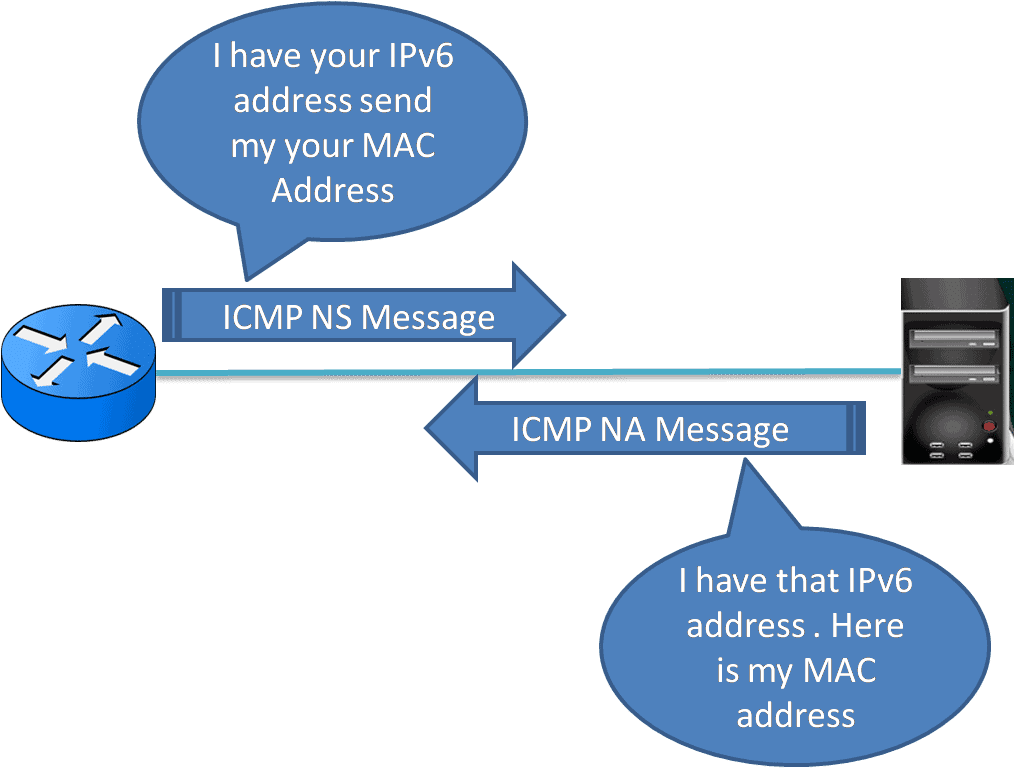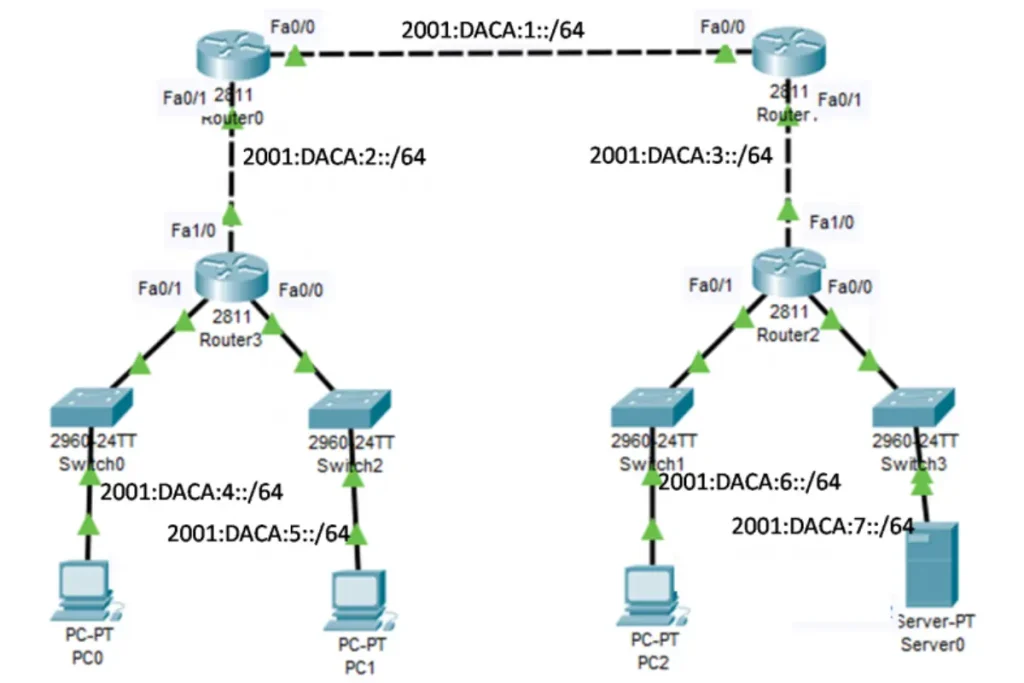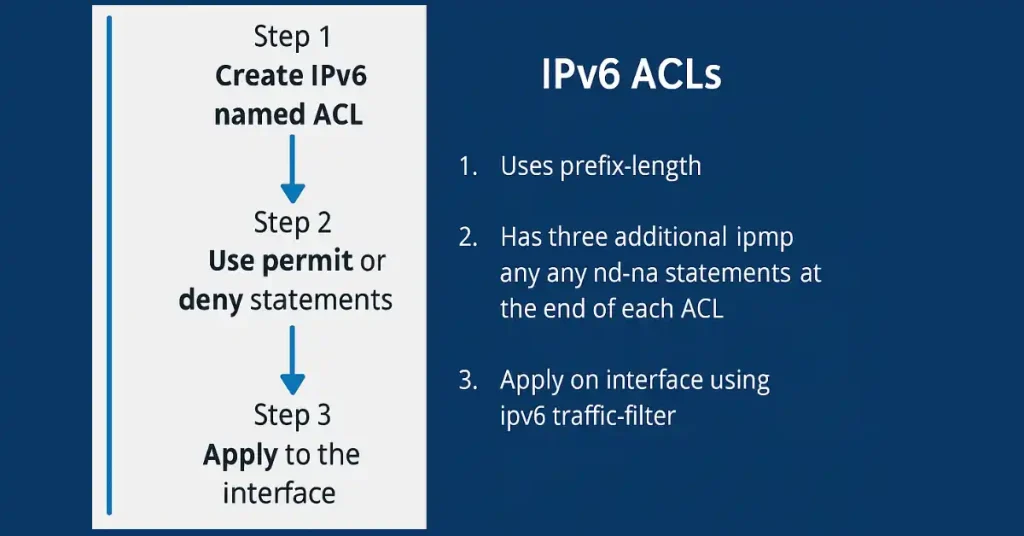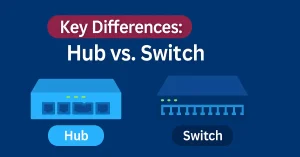Access Control Lists (ACLs) are a fundamental component of network security, and understanding IPv6 ACLs is essential for CCNA and CCNP certification candidates. As networks transition from IPv4 to IPv6 to accommodate the growing number of devices, mastering IPv6 ACL configuration is critical for securing modern networks. This comprehensive guide explains IPv6 ACLs, compares them with IPv4 ACLs, and provides step-by-step configuration examples, verification commands, and practical tips for Cisco networking students. Whether you’re preparing for your CCNA or CCNP exam, this article will equip you with the knowledge to configure, apply, and troubleshoot IPv6 ACLs effectively.
What You’ll Learn:
- Key differences between IPv4 and IPv6 ACLs.
- Step-by-step configuration of IPv6 ACLs on Cisco routers.
- How to apply and verify IPv6 ACLs.
- Common mistakes to avoid and best practices for success.
Comparing IPv4 and IPv6 ACLs
IPv4 and IPv6 ACLs serve the same purpose—filtering network traffic—but they differ in structure, application, and configuration. Understanding these differences is crucial for CCNA and CCNP students transitioning from IPv4 to IPv6 environments.
Table: IPv4 vs. IPv6 ACLs
| Feature | IPv4 ACLs | IPv6 ACLs |
|---|---|---|
| Types | Standard, Extended | Extended only |
| Naming | Numbered or Named | Named only |
| Application Command | ip access-group | ipv6 traffic-filter |
| Wildcard/Prefix | Uses wildcard masks | Uses prefix lengths |
| Implicit Statements | deny any or deny ip any any | permit icmp any any nd-na, permit icmp any any nd-ns, deny ipv6 any any |
Key Differences
- Applying an IPv6 ACL IPv4 uses the ip access-group command to apply an ACL to an interface, whereas IPv6 uses the ipv6 traffic-filter command to perform the same task.
- Wildcard Masks vs. IPv6 Prefix Length IPv6 ACLs do not use wildcard masks. Instead, they use prefix lengths (e.g., /64) to specify how much of an IPv6 source or destination address to match, similar to subnet masks but applied directly in the ACL.
- Implicit Permit Statements in IPv6 ACLs IPv4 ACLs end with an implicit deny any or deny ip any any, blocking all traffic not explicitly permitted. IPv6 ACLs include three implicit statements:
- permit icmp any any nd-na
- permit icmp any any nd-ns
- deny ipv6 any any
Table: IPv4 ARP vs. IPv6 Neighbor Discovery
| Feature | IPv4 ARP | IPv6 Neighbor Discovery |
|---|---|---|
| Purpose | Resolves MAC addresses | Resolves MAC addresses |
| Protocol | Layer 2 (ARP) | Layer 3 (ICMPv6) |
| Messages | ARP Request/Reply | Neighbor Solicitation/Advertisement |
| ACL Impact | Not affected by ACLs | Requires implicit permits in ACLs |

Configuring IPv6 ACLs
We use a topology similar to the previous IPv4, except for the IPv6 addressing scheme. The addressing scheme is shown in topology in the figure below. There are seven subnets with the/64 prefix. You can verify the IPv6 interface configuration using the show ipv6 interface brief command in the interface configuration mode.
Recall that we can set the IPv6 address on the router interface using the “IPv6 address <Ipv6 address/ prefix> “ for example, If I want to set the IP address on router0 interface fa0/0, the command should be: R0(config-if)# IPv6 address 2001:DACA:1::1/64

The command syntax for IPv6 is similar to the syntax used for an IPv4 extended ACL. The difference between both command syntax is using the IPv6 prefix-length instead of an IPv4 wildcard mask. The command syntax for IPv6 ACLs is the following:
R1(config)# ipv6 access-list <access-list-name>
R1 (config-ipv6-acl)# deny | permit protocol {source-ipv6-prefix/prefix-length any | host source-ipv6-address} [operator <port-number>] {destination-ipv6-prefix/prefix-length | any | host destination-ipv6-address} [operator [port-number] ]
You can see that the parameter is similar to IPv4 syntax parameter except for the prefix/prefix-length. The steps for IPv6 ACL configuration are the following:-
- Use the ipv6 access-list <name> command to create an IPv6 ACL. The name can be alphanumeric, case sensitive, and must be unique and there is no need for a standard or extended option.
- From the IPv6 named ACL configuration mode, use the permit or deny statements to specify one or more conditions to decide if a packet is forwarded or dropped.
- Apply the ACL to Interface using ipv6 traffic-filter
Step 1: Create the IPv6 ACL
The configuration below illustrates the steps to create an IPv6 ACL with a simple example. The first statement names the IPv6 access list NO- ACCESS-SERVER. Similar to IPv4 named ACLs. The second statement denies all IPv6 packets from the 2001:DACA:4::/64 to server0. The third statement allows all other IPv6 packets.
R2(config)# ipv6 access-list NO-ACCESS-SERVER0 R2(config-ipv6-acl)# deny ipv6 2001:DACA:4::/64 any R2(config-ipv6-acl)# permit ipv6 any any R2(config-ipv6-acl)# exit
Step 2: Apply the ACL to an Interface
When configuring the access control list, you must link to an interface using the ipv6 traffic-filter command. The syntax linking ACL to an interface is following:
R2(config-if)# ipv6 traffic-filter <access-list-name> { in | out }
The figure below illustrates the NO-ACCESS-SERVER configured previously and the commands used to apply the IPv6 ACL outbound to the fa0/0 interface. To remove an ACL from an interface, first, enter the no ipv6 traffic-filter command on the interface, and then enter the global no ipv6 access-list command to remove the ACL. Like IPv4 ACL IPv6 ACL also uses an access-class command to apply an access list to VTY ports. To apply the above-configured ACL use the following commands on router2.
R2(config)# interface FastEthernet 0/0
R2(config-if)# ipv6 traffic-filter NO-ACCESS-SERVER0 in
R2(config-if)# exit
R2(config)#
Step 3: Verify the Configuration
We can use similar commands to verify an IPv6 access list to those used for IPv4 ACLs. We can use the show ipv6 interface command to verify and confirm that ACL is configured inbound or outbound on the interface.
We can use the show access-lists command to displays and verify all access lists configured on the router including both IPv4 and IPv6 ACLs. The difference here is the sequence number; the sequence numbers of IPv6 ACLs occur at the end of the statement and not the beginning as with IPv4 access lists.
The IPv6 ACEs appear in the order they were entered during configuration. They are not always incremented by 10. The IPv6 access lists are also processed and displayed in the order the statements are entered. We can also verify the IPv6 ACL configuration using the show running-config command.
Common Mistakes and Best Practices for IPv6 ACLs
Common Mistakes
- Forgetting Implicit Statements: Failing to account for the implicit
permit icmp any any nd-naandpermit icmp any any nd-nscan lead to unexpected behavior, as ND traffic is always allowed unless explicitly denied. - Incorrect Prefix Length: Using an incorrect prefix length (e.g.,
/128instead of/64) can block unintended traffic or allow unauthorized access. - Wrong Interface Direction: Applying the ACL in the wrong direction (
invs.out) can render it ineffective. Always verify the traffic flow. - Overly Broad Rules: Placing a
permit ipv6 any anybefore specificdenystatements can negate the intended filtering.
Best Practices
- Use Descriptive Names: Choose clear, unique names for ACLs (e.g.,
BLOCK-HTTP-SERVER0) to improve readability and maintenance. - Test ACLs in a Lab: Before deploying in production, test ACLs in a lab environment (e.g., Packet Tracer or GNS3) to avoid disruptions.
- Document Your ACLs: Maintain documentation for each ACL, including its purpose and applied interfaces.
- Verify Regularly: Use
show access-listsandshow ipv6 interfaceto confirm ACL behavior after configuration changes.
Conclusion
IPv6 ACLs are a critical skill enabling secure traffic filtering in modern IPv6 networks. By understanding their differences from IPv4 ACLs, mastering configuration commands like ipv6 traffic-filter, and avoiding common mistakes, you can confidently tackle exam questions and real-world scenarios. Practice in a lab environment, verify configurations with show commands, and use descriptive naming to streamline your workflow. For further study, explore advanced topics like time-based ACLs or IPv6 security with IPsec to deepen your expertise.
FAQs
What are the steps to configure an IPv6 ACL?
The process involves three steps: create a named IPv6 ACL, use permit or deny statements, and apply it to an interface using ipv6 traffic-filter. This ensures effective network control.
What is the role of prefix-length in IPv6 ACLs?
Prefix-length in IPv6 ACLs defines the network range for filtering. It’s a key feature, enhancing precision in traffic control and security management.
Why are additional implicit statements added to IPv6 ACLs?
IPv6 ACLs include three implicit any any nd-na statements at each ACL’s end to block unspecified traffic, bolstering network security by default.
How do I apply an IPv6 ACL to an interface?
Apply an IPv6 ACL to an interface using the ipv6 traffic-filter command after creating the ACL and defining permit/deny rules, ensuring tailored network access.





